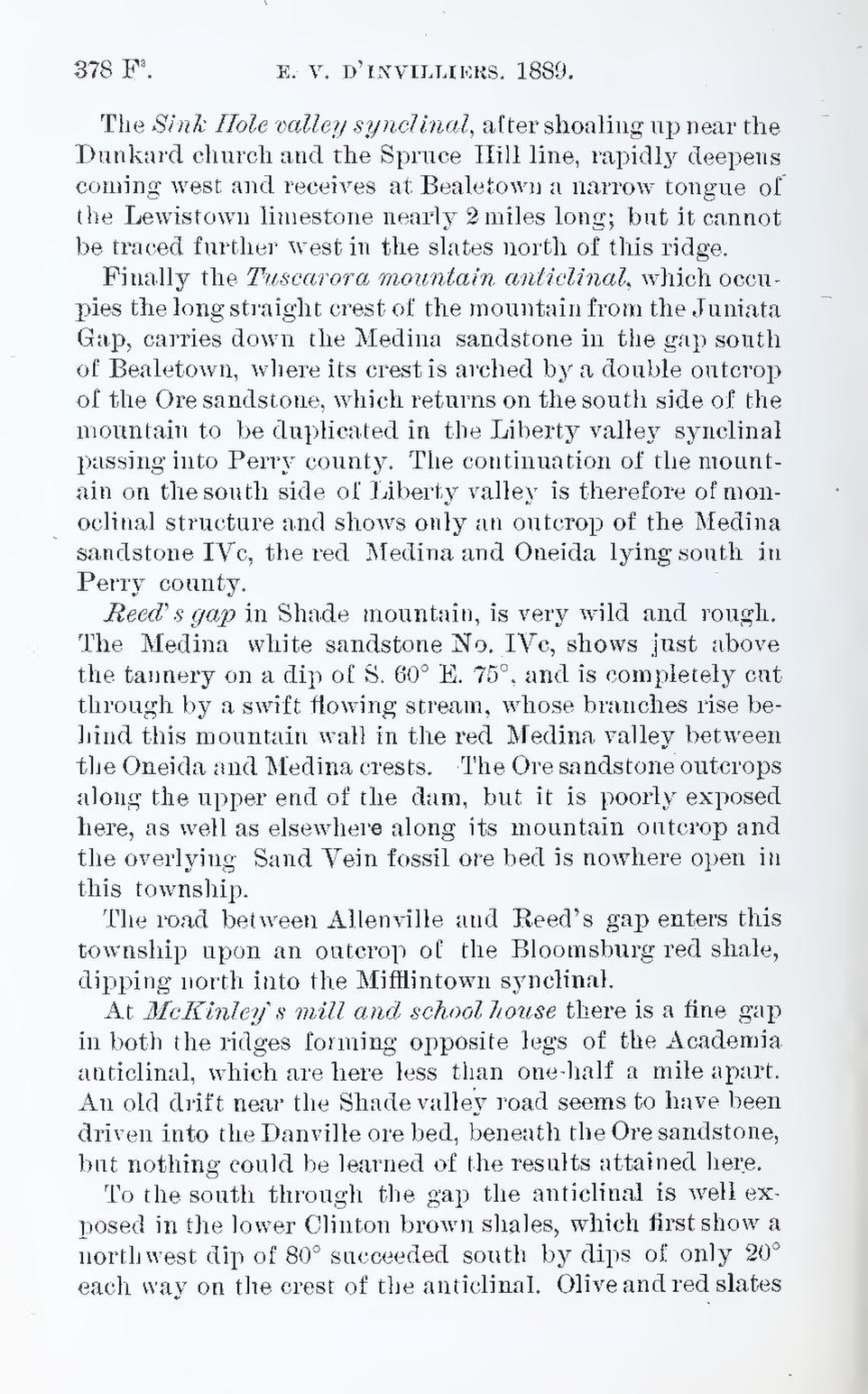The Sink Hole valley synclinal, after shoaling up near the Dunkard church and the Spruce Hill line, rapidly deepens coming west and receives at Bealetown a narrow tongue of the Lewistown limestone nearly 2 miles long; but it cannot be traced further west in the slates north of this ridge.
Finally the Tuscarora mountain anticlinal, which occupies the long straight crest of the mountain from the Juniata Gap, carries down the Medina sandstone in the gap south of Bealetown, where its crest is arched by a double outcrop of the Ore sandstone, which returns on the south side of the mountain to be duplicated in the Liberty valley synclinal passing into Perry county. The continuation of the mountain on the south side of Liberty valley is therefore of monoclinal structure and shows only an outcrop of the Medina sandstone IVc, the red Medina and Oneida lying south in Perry county.
Reed’s gap in Shade mountain, is very wild and rough. The Medina white sandstone No. IVc, shows just above the tannery on a dip of 8. 60° E. 75°, and is completely cut through by a swift flowing stream, whose branches rise behind this mountain wall in the red Medina valley between the Oneida and Medina crests. The Ore sandstone outcrops along the upper end of the dam, but it is poorly exposed here, as well as elsewhere along its mountain outcrop and the overlying Sand Vein fossil ore bed is nowhere open in this township.
The road between Allenville and Reed’s gap enters this township upon an outcrop of the Bloomsburg red shale, dipping north into the Mifflintown synclinal.
At McKinley’s mill and school house there is a fine gap in both the ridges forming opposite legs of the Academia anticlinal, which are here less than one-half a mile apart. An old drift near the Shade valley road seems to have been driven into the Danville ore bed, beneath the Ore sandstone, but nothing could be learned of the results attained here.
To the south through the gap the anticlinal is well exposed in the lower Clinton brown shales, which first show a northwest dip of 80° succeeded south by dips of only 20° each way on the crest of the anticlinal. Olive and red slates
